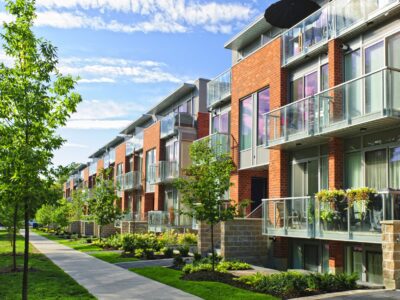The information provided in this article is for your information and you do not need to take any action at this stage.
Background
The Qld state government has brought into place laws to address what it estimates could be up to 12,000 buildings with non-conforming cladding. The issue over what cladding has been used on buildings really came to the fore after the disastrous Grenfell Tower fire in the UK in 2017. In Australia there was the Lacrosse Tower fire in Melbourne in 2014.
Since Grenfell there has been a State by State approach to non-conforming cladding in Australia. The Queensland approach was initially to create the Non-Conforming Products audit taskforce which led to the Government addressing concerns with all of their Government-owned buildings.
New legislation: Building and Other Legislation (Cladding) Amendment Regulation 2018
Commencing on 1 October 2018, your building falls under the new legislation if your building:
- is any of classes 2 to 9 (which covers the majority of residential and commercial buildings, other than houses or townhouse); and
- had a building development approval issued after 1 January 1994 but before 1 October 2018 to build the building or alter the cladding; and
- is of Type A or Type B construction (essentially buildings of three storeys or higher)
Those buildings will need to comply with the process. This is the case even if you are 100% certain there is no cladding on your building.
What Capitol is doing
We have set up a dedicated team to guide affected bodies corporate through the entire process.
- Our managers are attending training sessions regarding cladding
- A fire engineer and other experts will speak to our management team about the new legislation in early September
- Once we have that information and training, Capitol will be communicating with those schemes we manage, which we think will need to comply with the legislation.
What we know so far
Affected buildings have until 29 March 2019 to complete the steps below:
- A committee member is required to set up a QGov account (unless they already have one).
- The body corporate needs to register and complete an online checklist via the QBCC. This checklist identifies if your building is likely to have non-conforming cladding.
- If your building is identified as likely to be affected, you proceed to stage 2. The process for stage 2 will be explained in future communications from our team.
Capitol has been provided details of what is included in the QBCC checklist. Once we have reviewed that information we will provide you with further information.
If the body corporate doesn’t complete registration and the checklist, the Government may apply penalty units and/or a fine directly to the body corporate.
What we do know and what concerns us greatly is that:
- If a person outside of the committee prepares the checklist on behalf of a body corporate, then that person must sign a statutory declaration stating that they are authorised by the body corporate to do so; and
- Of much more concern, the checklist will need to be signed off, again in the form of a statutory declaration, by a member of the body corporate committee to the effect that the contents are true and correct.
Why the Qld government considered that it is necessary to have statutory declarations at this early stage of the process is anyone’s guess.



